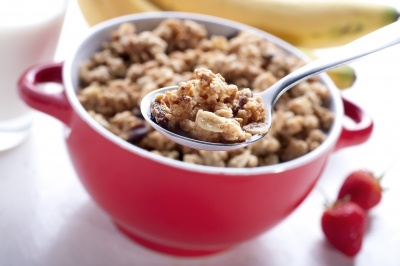
Dietary fibre is one of the most important nutritional features of food. Its importance has risen over the years for a number of reasons:-
- Disorders of the digestive system are a major concern for many health bodies. Improving fibre intake offers a real opportunity for product developers in the food, beverage and dietary supplements market.
- Consumers regard dietary fibre as the key significant ingredient to be associated with good digestive health.
- The amount of fibre in the diet is a key concern of consumers who want to manage their weight and actively support their digestive health. Consumers are increasingly looking for ways to increase the amount of fibre in their diet.
The research into the benefits of dietary fibre in nutrition is vast and provides a rich source of innovative science, especially in the variety of health conditions which can be ameliorated by regular ingestion of fibre (Buttriss and Stokes, 2008). This article sets out to define some of the values and those following will draw on individual aspects of the field. Scanning the retail shelves confirms that dietary fibre-rich foods have become especially popular with those conscious of improving their health.
Incidentally I use fibre and fiber as two spellings interchangeably just to ensure search engines pick up the different words – apologies for that!
Consumers Around The World Actively Seek Dietary Fibre In Foods
The market research organisation, Mintel, using its online consumer panel called Lightspeed has found consumers take fibre for all sorts of reasons. Based on their findings from 2016 and 2017 of US consumers:-
- 19% of US consumers who buy crackers agree a high fibre content is an important attribute
- 35% would like to see more high fibre nuts, seeds and ingredients in trail mixes
- 64% of US consumers wishing to lose weight by dieting agree they look for fibre when purchasing ‘healthy’ foods.
- 34% of US consumers of bread seek types high in fibre.
In other parts of the world, similar pictures emerge. In Brazil, 29% of those who consume salty snacks feel that if these are high in fibre, it helps them feel fuller between their meals. In France, Spain and Italy, 38%, 47% and 53% (respectively) of consumers are incorporating more fiber into their diet than the previous year.
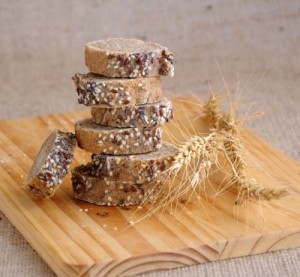
Types Of Fibre
Most plant foods such as fruit, cereals, vegetables and pulses are a source of fibre which cannot technically be digested by the body (Anderson et al., 2006). This is scientifically described as non-starch polysaccharide (NSP). Two types exist – insoluble and soluble. The insoluble form helps the bowels pass food by making stools soft and bulky and helps prevent constipation. Soluble fibre on the other hand helps digestive health, control blood sugar and even lower cholesterol levels. Soluble fibre is usually found in oats, apples, legumes such as beans, peas and lentils. It forms gel-like substance as it moves through the gastrointestinal tract. It too helps to hold water and can produce stool bulking.
Defining dietary fibre is still controversial and not properly agreed upon. There are three main views which centre on its measurement, the componentry and the source. In November 2008, a global definition was reached and defined in the Codex Alimentarius which is:-
‘Dietary fibre means carbohydrate polymers with ten or more monomeric units, which are not hydrolysed by the endogenous enzymes in the small intestine of humans and belong to the following categories:
♦ Codex 1: Edible carbohydrate polymers naturally occurring in the food as consumed;
♦ Codex 2: Carbohydrate polymers which have been obtained from food raw material by physical, enzymatic or chemical means and which have shown to have a physiological effect of benefit to health as demonstrated by generally accepted scientific evidence to competent authorities;
♦ Codex 3: Synthetic carbohydrate polymers which have been shown to have a physiological effect of benefit to health as demonstrated by generally accepted scientific evidence to competent authorities.
For Codex 2& 3 to be accepted as a definition, the dietary fibre must demonstrate a physiological health benefit.
The Health & Medicines Division (formerly the Institute of Medicine) of the National Academies in the USA also provides some valuable definitions. There working definition of fiber is ‘nondigestible carbohydrates and lignin that are intrinsic and intact in plants.’
The total fibre in a product is the sum of all the dietary fibre and any added fibre. Dietary fibre which is intrinsic is all the non-digestible carbohydrate and lignin that remains intrinsic and intact in plants. Added fibre which has a functional benefit is all the isolated non-digestible carbohydrate that has a beneficial physiological effect in humans.
Clearly, good working definitions of what dietary fibre constitutes are important if claims are to be made.
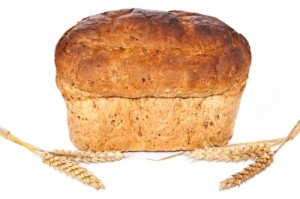
Recent market research still shows that most people worldwide do not eat enough fibre. In the USA, the average intake is 14 g daily and the US Dietary Guidelines (2005) recommend 14 g of fibre per 1000 calories consumed although there are provisos for age and gender. If the recommended average intake for a male say is 2,500 calories, then a dietary intake of 35 g would be needed. The mean intake of dietary fiber in the United States is actually 17 g/day. Only 5% of the population is meeting the Adequate Intake (Dahl & Stewart, 2015).
In the United Kingdom, the average intake is 12 g daily whilst the current daily recommended value (DRV) is 18 g or 24g daily depending on which analytical method is used to measure it. That last comment is critical.
Analysis of Dietary Fibre
There are several methods for fibre measurement that have been consistently used and others are continually being evaluated in the UK and Europe. The methods of Southgate and of Englyst have been available for many years as have been the Association of Official Analytical Chemists (AOAC) methods.
Efforts to standardize dietary fibre measurement by various nutritional bodies are still ongoing but with so many different methods, much confusion has been caused in fibre labelling and the measurement of intake across Europe. In 1999, MAFF (Ministry of Agriculture, Food & Fisheries) in the UK as it was then, along with the Department of Health suggested adopting the Association of Official Analytical Chemists (AOAC) international method of analysis of dietary fibre for labelling purposes (JFSSG 1999). This was known as the ‘Official Method of Analysis, AOAC Official Method 985.29. Total Dietary Fibre in Foods – Enzymatic Gravimetric Method’ (AOAC International, 1995). This method allows for rapid determination of the total dietary fibre content of foods using enzymatic and gravimetric methods. It was the favoured method of analysis in all other EU member states, and would ensure consistency and reliability of information available on food labels to consumers across the EU. The AOAC international method measures a range of components in addition to NSP. In recent years the EU has begun to adopt AOAC methods as the method of choice for consistency purposes.
The standard reference of McCance and Widdowson (1995) gives the content of most fruits and vegetables most of which have been tabulated using both these methods. The Englyst method measures just the non-starch polysaccharides (NSP) component whereas the Southgate method measures additional components such as lignin, resistant starch as well as the NSP value. The Southgate values are always slightly higher as a result and the NSP values are the ones quoted on food labels unless stated otherwise (Coultate, 2002).
What Are The Functionality Of Fibres In Metabolism
We have split dietary fibre into two types:- non-soluble and soluble fibres. The non-soluble fibres have the following properties when they are in the gut:-
- Low swelling power (1x)
Indigestible fibres
Increases the nutrition volume
Stimulate the intestinal peristaltic
Zero calories.
The soluble fibres on the other hand have the following properties:-
High swelling power (beta- glucan 40x)
Gelling agent in the gastrointestinal tract
Nutrition for requested enterobacteria
Degradation product, metabolism influencing.
Recommended Dietary Fibre Intakes For Adults
Most countries recommend a daily dietary fibre intake of 25–35 g for adults (25– 32 g/d for adult women and 30–35 g/d for adult men) and less for children and older adults depending on age, corresponding to approximately 3–4 g/MJ.
EFSA (2015) recommend 25g/day but many individual countries suggest higher levels. The UK (SACN, 2015), Germany, Austria and Switzerland (DACH, 2008) suggest 30g/day.
The AFSSA in France recommend a level between 25 and 30 g/d.
In the USA, the level of fibre is between 25 and 38g/day. (See article). The current position of the USA’s Academy of Nutrition and Dietetics states that the public should consume adequate amounts of dietary fiber from a variety of plant foods.
Health Benefits
- Cardiovascular Benefits
Looking at other statistics for dietary fibre, if we eat 10 g more fibre than usual, we might reduce our risk from heart disease by 14% according to the British Heart Foundation (2008).
EFSA (2010) has, using a wide range of resources stated that a daily intake of 25 g is good enough for normal bowel function in adults and that there are ‘health benefits associated with higher intakes of dietary fibre’ in the areas of reduced heart disease (Liu et al., 1999), reduced incidence of stroke (Steffen et al., 2003), lowering hypertension (Whelton et al., 2005), type 2 diabetes (Montonen et al., 2003) and weight maintenance (Lairon et al., 2005). EFSA has not however fully endorsed the more specific benefits in an Article 13 health claim because fibre is insufficiently characterised. It almost sounds obvious but then dietary fibre is available in a variety of forms and from so many different sources.
- Diabetes
A diet rich in fibre might also reduce the risk of developing diabetes by a third (see Diabetes UK, www.diabetes.org.uk).
- Cancer
Doubling fibre intake from a UK average of around 13 g daily might also reduce the risk of bowel cancer by 40%.
- Diverticulosis.
High-fiber diets reduce the occurrence of flare-ups which characterise diverticulosis. It’s not entirely known what causes this gut condition but there is a strong association with low-fibre diets. Fibre absorbs water as it passes through the colon which makes passing stools easier and thus helps with bowel movements. A diet rich in fruits and vegetables which contain plenty of fibre in their own right reduce inflammation especially in the colon.
Regulatory Aspects On Dietary Fibre
Although there is no UK legislation covering fibre claims, the FSA has issued guidance notes. The Corrigendum to Regulation (EC) No 1924/2006 of the European Parliament and of the Council of 20 December 2006 on nutrition and health claims made on foods stated that claims surrounding fibre should contain the following:
1. Source of Fibre
A claim that a food is a source of fibre, and any claim likely to have the same meaning for the consumer, may only be made where the product contains at least 3g of fibre per 100g or at least 1.5g of fibre per 100 kcal. (Official Journal of the European Union L 404 of 30 December 2006)
2. High Fibre
A claim that a food is high in fibre, and any claim likely to have the same meaning for the consumer, may only be made where the product contains at least 6 g of fibre per 100 g or at least 3 g of fibre per 100 kcal. (Official Journal of the European Union L 404 of 30 December 2006).
Let’s go back to definitions again because other organisations are looking to establish what amounts are required.
The USA’s FDA is proposing distinct definitions for fibre on these grounds:-
1. Non-digestible soluble and insoluble carbohydrates (with 3 or more monomeric units) and lignin that are intrinsic and intact in plants
2. Isolated and synthetic non-digestible carbohydrates (with 3 or more monomeric units) that FDA has granted be included in the definition of dietary fibre, in response to a petition submitted to FDA
3. Isolated and synthetic non-digestible carbohydrates (with 3 or more monomeric units) that are the subject of an authorised health claim.
The types of fibre which are defined as non-digestible carbohydrates (NDCs) that meet the FDA’s definition include the following:-
- lignin
- arabinoxylan
- β-glucan soluble Fibre (AOAC 992.28)
- Psyllium husk (AOAC 991.43)
- Cellulose
- Guar gum
- Locust bean gum
- Pectin
- Hydroxypropylmethylcellulose
- alginate
- inulin and inulin-type fructans
- high amylose starch or resistant starch 2
- galactooligosaccharide
- polydextrose
- resistant maltodextrin or dextrin
- the FDA has a broad category called ‘mixed plant cell wall fibers’ which can be an ingredient containing two more of these cell wall fibers mentioned above.
If a business can identify dietary fibers from the list in their fibre ingredient, they organise a citizen’s petition to have the fibre recognised as dietary fibre by the FDA. RiceBran Technologies (RBT) who produce rice bran fiber had their petition granted by the FDA in 2018. Rice bran fiber contains a mix of cellulose, arabinoxylan, lignin and pectin.
Take a look at the FDA web-site for further updates and bits of useful information (see article).
Remember to look for the source of fiber on the ingredient list and check where it comes on that list too.
Sources Of Fibre (Fiber)
Nuts and seeds are classic sources of fibre. An ounce of chia seeds contains 10 grams of fibre which is equivalent to 2 tablespoons. A 1/4 cup serving of pumpkin or sunflower seeds contains 3 grams of fibre. Walnuts contains 2 grams of fiber (1/4 cup) and the same amount of raw almonds contains 4 grams. These are the types of seed and nut to add to other foods such as salads, rice, pasta, or yogurt, or they can be eaten as a snack.
Fibre is also found in cooked whole grains. There are 3 grams of fibre in an ounce of popcorn, a cup of cooked brown or wild rice. The ancient grains which we often talk about are also excellent sources – a cup of cooked amaranth contains 5 grams fibre, kamut and teff have even more – 7 grams.
Vegetables have always been a good source of fibre. Broccoli and brussels sprouts, in fact most of the Cruciferae, have about 3 grams of fibre per cup. In the other vegetables we have the following:-
- collard greens (1 cup cooked): almost 8 grams
- baked butternut squash cubes (1 cup): almost 7 grams
- artichoke hearts (1 cup): 5 grams
- cooked corn (1 cup): almost 4 grams
- 10 asparagus spears: 3 grams.
Fruits are a great source of fibre especially their skins, peels or rinds. A typical average sized orange or banana contains 3 grams of fibre. Others though deserve a mention !
- California avocado: 9 grams
- blackberries (1 cup): 7 grams
- blueberries (1 cup): 4 grams.
- guava (1 cup): 9 grams
- mango: more than 5 grams
- medium-sized pear: almost 6 grams
- raspberries (1 cup): 8 grams
Foods which are prepared from dietary fibre and which we can suggest are good sources:-
- bread – mainly whole wheat, barley, oat but not white !
- burgers – black bean or soy are classics
- cereal – bran flakes, oatmeal
- flour – almond, chickpea, oat
- pasta – lentil, black bean and whole wheat. Pastas using refined durum wheat do not have the necessary fibre content.
FODMAPs
FODMAPs is a controversial subject in the world of fibre. It is an acronym that stands for the carbohydrates ‘Fermentable Oligo-, Di-, and Monosaccharides, And Polyols (FODMAPs)’.
The term was coined in 2005 by by Australian researchers (Gibson and Shepherd, 2005) who theorise that foods containing FODMAPs worsen the symptoms of digestive disorders. These are Irritable Bowel Syndrome (IBS) and Inflammatory Bowel Disease (IBD).
There are serious concerns with the concept. Essentially a low FODMAP diet is a low fibre diet. The recommendations from this research were based on clinical observations from only a few research trials. The efficacy of the FODMAPs is not well documented at all. Also, the grouping of all these components together ignored the physiological differences between the individual components even though the patient might have a better understanding generally. The concept is also poorly defined and there is no regulatory guidance or official database available.
Product Development With Dietary Fibre In Mind
Product developers need to exercise caution when developing foods designed to deliver the various claims of higher ‘source of’ or ‘rich in’ fibre.
Cereals
Insoluble fibres are problematic because they interfere with cell structure and reduce expansion. The benefit however is a crumbling structure to the cereal. You are better off with soluble fibres which are ideal for extrusion products but overuse or too much can produce too soft a food structure which is then perceived as stale.
Bars
Insoluble fibres often produce a gritty mouthfeel but a crumbly texture. That latter aspect is sometimes desirable but will compete for moisture and even interfere with binder systems. They also cause the product to dry out much quicker over the shelf-life of the product which sometimes makes it seem as if the bar is stale. Beta-glucans as a form of non-starch polysaccharide are ideal for use in health bars.
The soluble fibres work very well in place of sugar or sugar syrups which is a bonus!
Beverages Needing Dietary Fibre
Nutritional beverages can be created in both powdered and liquid formats which really do benefit from addition of soluble fibre. The performance and functionality of the soluble fibres is critical here. The fibres must readily hydrate and be dispersible in solution. Beware however of the increase in viscosity which is great from a functional point of view but an issue when pumping stock solutions about. The other critical aspects which apply to any product is the stability of the fibre in solution, its taste including the dulling of flavours, texture and mouthfeel.
There is tendency for high acid beverages to contribute to the hydrolysis of carbohydrate. What does that mean ? You might not have the fibre content in the product at the end of shelf-life that you started out with.
Baked Goods
Dietary fibre is often sourced by consumers in baked goods because it is such a good delivery system. The fibre impacts dough properties and changes bread baking quality in a number of ways:-
– Water retention capacity can impact hardness of the load
– Can cause large number of non-uniform large gas cells
– Can impact crumb structure and texture
– Contributes to lower loaf volume
– Can impact color of bread crumb and crust
– Taste, aroma, texture can be impacted
– Staling and bread quality
Adding dietary fibres to gluten free products has a number of benefits:-
– Improves nutritional quality
– Improves sensory properties
– Improves overall acceptability
– Improves final bread quality – fine taste, uniform crumb texture, brown color, fresh appearance.
The identification of the ideal dietary fibre and correct dosage is a necessary requirement.
High Fibre Foods – Needed Characteristics
Production of high dietary fibre products (HDPFs) has also prompted development of novel technologies to prepare these foods. The HDPFs are characterised by a balanced composition between soluble and insoluble fibres with up to 50% dry weight of the product as dietary fibre or a total dietary indigestible fraction. Such foods also contain significant levels of antioxidants, vitamins and minerals, have a low moisture content (<0.1%w/w), a low calorific value (<8.4 kJ per g of product), and a low or neutral flavour and aroma profile (O’Shea et al., 2012)
Conclusions
At the moment, fibre intake continues to be less than half the recommended level desired by nutritionists even in countries which have consumers actively seeking fibre in their diet.
We know fibre significantly impacts health and well being.
Addition of fibre may be the best way to get fibre into the diet without adding calories.
Many fibre solutions are available but there is a trend towards whole foods and clean label which present challenges to filling the fiber intake gap.
Revision: Updated with additional information about sources of fibre – 03/-7/2018
References
Anderson, J.W., Baird,P., Davis, R.H., Jr., Ferreri,S., Knudtson,M., Koraym, A.,et al.(2009). Health benefits of dietary fiber. Nutr. Rev., 67 pp. 188-205
British Heart Foundation (2008) Statistics in www. Heartstats.org.uk
Buttriss, J.L. Stokes, C.S. (2008) Nutr. Bulletin 33 (3) pp. 186-200.
Dahl, W.J., & Stewart, M.L. (2015) Position of the Academy of Nutrition and Dietetics: Health Implications of Dietary Fiber. J. Acad. Nutr. Diet. 115(11) pp. 1861-1870 (Article)
EFSA (2010) EFSA sets European dietary reference values for nutrient intakes. (Article).
Englyst, H. N., Quigley, M. E., Hudson, G. J., Cummings, J. H. (1992) Determination of dietary fiber as non-starch polysaccharides by gas-liquid chromatography. Analyst 117, pp. 1707-1714
Gibson, P.R., Shepherd, S.J. (2005) Aliment Pharmacol Ther.
Lairon,D., Arnault,N., Bertrais,S., Planells,R., Clero,E., Hercberg,S., et al.(2005).Dietary fiber intake and risk factors for cardiovascular disease in French adults. Amer. J. Clin. Nutr., 82 pp. 1185-1194
Liu, S., Stampfer, M.J., Hu, F.B., Giovannucci,E., Rimm, E., Manson, J.E., et al.(1999).Whole-grain consumption and risk of coronary heart disease: Results from the Nurses’ Health Study. Amer. J. Clin. Nutr., 70, pp. 412–419.
Montonen, J., Knekt, P., Jarvinen, R., Aromaa, A.,& Reunanen, A. (2003). Whole-grain and fiber intake and the incidence of type 2 diabetes. Amer. J. Clin. Nutr., 77, pp. 622–629
Shea, N., Arendt, E.K. Gallagher, E. (2012). Dietary fibre and phytochemicals characteristics of fruit and vegetable by-products and their recent applications as novel ingredients in food products. Innov. Food Sci. Emerging Technol., 16, pp. 1– 10
Steffen, L. M., Jacobs, D. R., Jr., Stevens, J., Shahar, E., Carithers, T., Folsom, A.R (2003). Associations of whole-grain, refined grain, and fruit and vegetable consumption with risks of all- cause mortality and incident coronary artery disease and ischemic stroke: The Atherosclerosis Riskin Communities (ARIC) Study. Amer. J. Clinical Nutr. 78, pp. 383–390.
Whelton, S.P.,Hyre,A.D.,Pedersen,B.,Yi,Y., Whelton,P.K., He, J.(2005).Effect of dietary fiber intake on blood pressure: A metaanalysis of randomized, controlled clinical trials. J. Hypertension, 23, pp. 475–481.
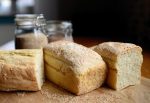
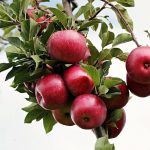
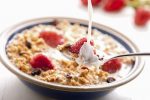
American Health Journal is looking for partner blogs in the medicine field. AmericanHealthJournal is a health care site containing a large library of high quality health care videos. We are looking for site owners who may be interested in writing guest articles to our brand. . Get in touch with us at our contact form on our site.